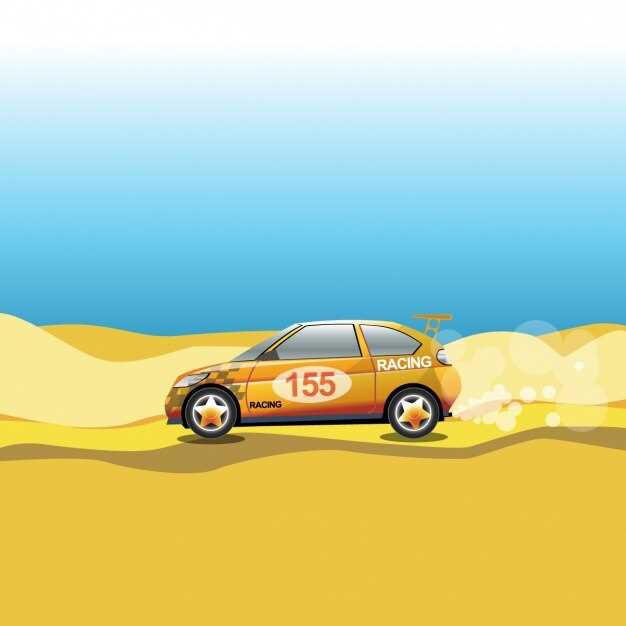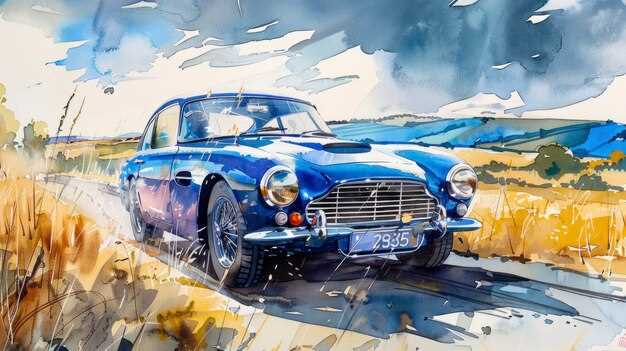
The Group B rally car era, spanning from the early 1980s to the mid-1980s, stands as one of the most exhilarating chapters in the history of motorsports. This unique period showcased an explosion of innovation, power, and adrenaline-fueled competition, capturing the hearts of fans and drivers alike. Group B cars were characterized by their astonishing speed, lightweight designs, and turbocharged engines, making them some of the most formidable machines ever to race on gravel, snow, and tarmac.
What set the Group B rally apart was not only the raw performance of these vehicles but also the incredible challenge they posed to drivers. The courses were often treacherous and unpredictable, pushing teams to their limits in terms of engineering and strategy. As spectators watched these rally beasts tackle hairpin turns and jumps at breakneck speeds, the thrill of the competition reached unprecedented heights. Challenges of both skill and courage defined this era, as drivers like Walter Röhrl, Henri Toivonen, and Michel Mouton became legends on the rugged stages.
However, the allure of Group B rally was not without its dark side. The very attributes that made these cars exhilarating also led to increased risks, culminating in a series of tragic accidents. As the thrill of high-speed racing began to overshadow safety concerns, the FIA made the difficult decision to dissolve the Group B category in 1986. Despite its brief existence, the legacy of Group B continues to influence modern rallying, embodying a spirit of adventure that resonates with enthusiasts and drivers around the world.
How Technological Innovations Shaped Group B Rally Cars

The Group B era of rally racing, which spanned from 1982 to 1986, is often regarded as one of the most exhilarating and innovative periods in motorsport history. Rally teams and manufacturers pushed the boundaries of engineering and technology, resulting in cars that were not only powerful but also incredibly advanced for their time.
- Engine Technology:
- Many Group B cars featured turbocharged engines, significantly enhancing performance and power output.
- Lightweight composite materials were used to manufacture engine components, reducing weight and improving speed.
- Aerodynamics:
- The use of spoilers, wings, and other aerodynamic features increased downforce, leading to improved handling at high speeds.
- Designers focused on creating sleek, low-drag shapes that maximized efficiency without sacrificing performance.
- Suspension Systems:
- Advanced suspension designs, such as the use of adjustable dampers, allowed for superior handling on varied terrains.
- Some manufacturers implemented four-wheel drive systems, enhancing traction and stability on slippery surfaces.
- Weight Reduction:
- Innovative materials like carbon fiber and aluminum were extensively used to lower vehicle weight, resulting in better acceleration and braking.
- Stripped interiors and minimalist designs helped reduce excess weight without compromising the safety of the driver and co-driver.
- Safety Innovations:
- Roll cages and advanced seatbelt systems were introduced as standard features, addressing the safety concerns that arose during early races.
- Improved visibility through enhanced lighting systems allowed for better performance during night stages.
The combination of these technological innovations not only transformed rally cars into formidable machines but also elevated the sport itself, captivating fans worldwide. The legacy of Group B continues to influence automotive engineering and rallying techniques to this day.
The Role of Driver Skill in Group B Rally Competitions
In the high-octane world of Group B rally competitions, the skill of the driver is paramount. Unlike other motorsports, where the car’s technology can often determine success, Group B places the emphasis on the driver’s ability to master challenging terrains and unpredictable conditions. The unique combination of high-speed stages and variable landscapes demands an unparalleled level of car control, precision, and instinctive decision-making.
Drivers in Group B were tasked with navigating a diverse range of environments, including icy roads, muddy tracks, and rocky paths. This required not only a deep understanding of their vehicle’s capabilities but also an acute sense of timing and rhythm. Exceptional drivers could read the terrain and adapt their driving style to exploit the car’s strengths, making split-second adjustments to maintain speed and control.
Moreover, communication with co-drivers played a crucial role in the success of rally teams. The co-driver’s notes, often delivered at high speeds, guided the driver through complex turns and hazards. A skilled driver could effectively interpret these instructions, maintaining focus while executing rapid maneuvers. This synergy between the driver and co-driver was vital in achieving optimal performance on the rally stages.
The demanding nature of Group B also meant that mental resilience was as important as physical skill. Drivers faced immense pressure due to the high speeds and the perilous nature of the sport. Successful competitors displayed remarkable concentration and composure, enabling them to push limits while managing the constant threat of mechanical failure or accidents.
Ultimately, the legacy of Group B rally competitions is a testament to the extraordinary talent of its drivers. Their ability to harness the raw power of their machines while skillfully navigating treacherous paths remains a defining feature of this exhilarating era in motorsport history.
Analyzing the Impact of Group B on Modern Rally Racing

The Group B rally car era, which spanned from 1982 to 1986, profoundly influenced the landscape of modern rally racing. The introduction of these powerful machines pushed the boundaries of automotive technology and set new standards in performance and speed. Manufacturers strived to develop vehicles that could withstand the grueling conditions of extreme rally stages, resulting in innovations that are still relevant today.
Performance Innovations: Group B cars featured cutting-edge engineering, including lightweight materials, turbocharged engines, and all-wheel-drive systems. These advancements have become foundational in contemporary rally vehicles, allowing for better handling and increased power. The high-performance benchmarks established by Group B still resonate within today’s rally regulations, prompting manufacturers to enhance their designs continuously.
Safety Protocols: The tragic accidents associated with Group B, including the infamous fatalities during events, led to an immediate reevaluation of safety standards in motorsport. Modern rally racing has since adopted rigorous safety measures, including better roll cages, fire suppression systems, and improved driver protective gear, making it significantly safer for participants and spectators alike.
Cultural Legacy: The allure of Group B has left a lasting cultural imprint on rally racing’s identity. The excitement and spectacle of those years attracted a new audience and generated a fervor that continues today. Modern events often pay homage to this iconic era, captivating fans with legendary vehicles and celebrating the spirit of competition that Group B embodied.
In conclusion, the impact of Group B on modern rally racing is undeniable. From technological innovations and safety enhancements to its cultural significance, this era has shaped rallying in profound ways. As rally continues to evolve, the influence of Group B remains a crucial part of its history and a benchmark for future developments.
